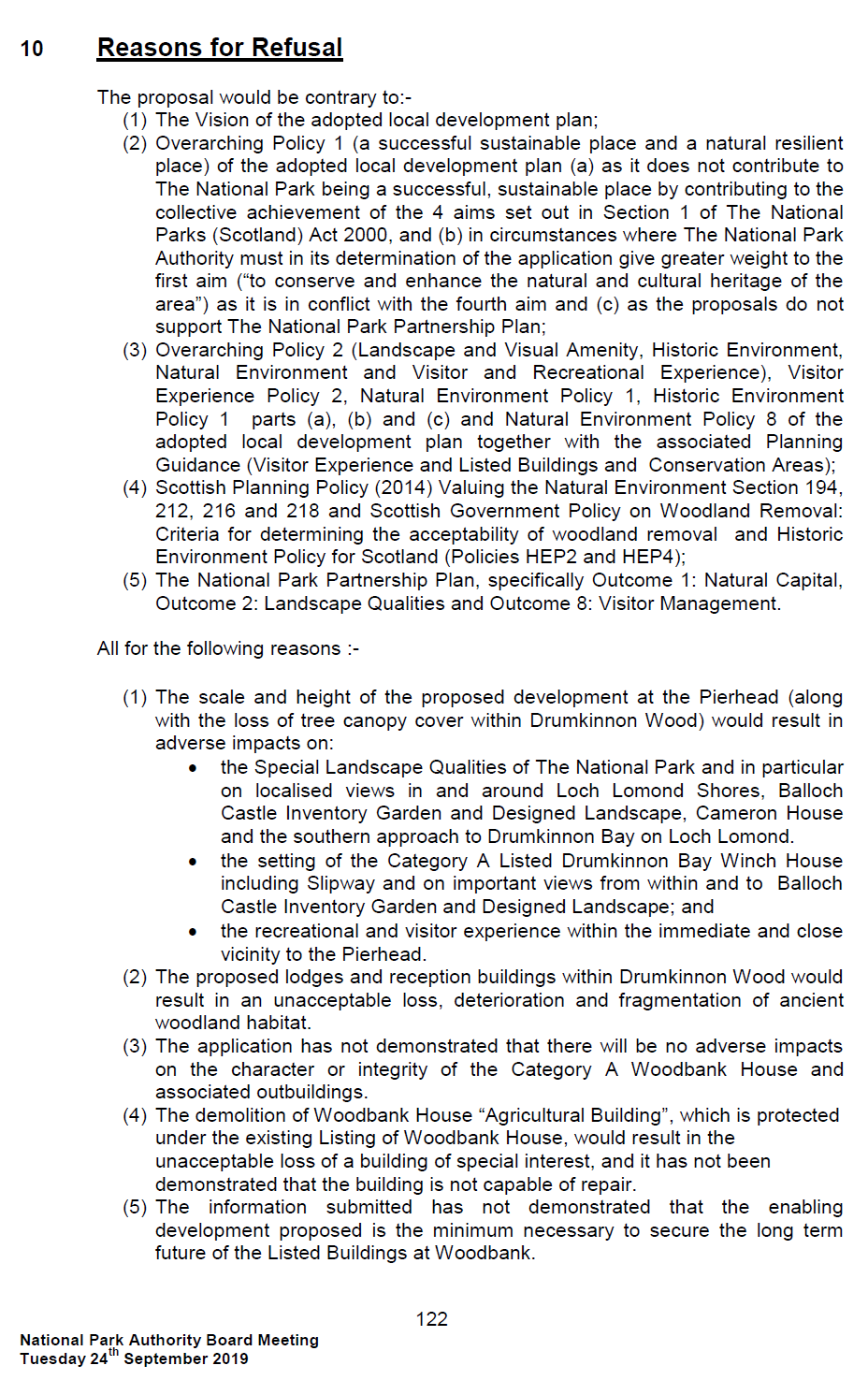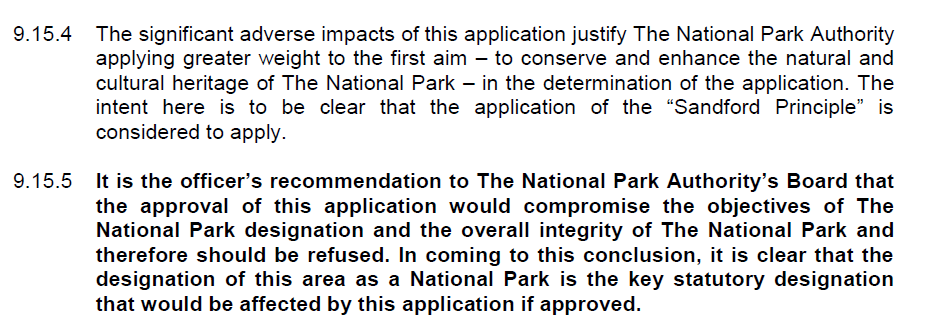In the first bit of really welcome news (see here) to have emerged from the Loch Lomond and Trossachs National Park for some time, officers have recommended that the entire Flamingo Land Planning Application is refused. This includes both the proposals for land owned by Scottish Enterprise and the National Park itself on the Riverside Site and the land Flamingo Land bought at Woodbank House.
Among the reasons for recommending refusal are many of the issues that have been covered on Parkswatch over the last two years:

While I have little doubt that part of the reason officers have been allowed to reach this conclusion has been the level of public opposition to the proposals, both locally and nationally, which has united politicians across the political spectrum, it is wonderful to see the emphasis that officers have put on the founding aims of the National Park and the fact that where these conflict conservation should come first:

This is the first time in three years of blogging about our two National Parks that I can recall any significant decision paper making a recommendation based on the Sandford Principle. For example, in the case of the Cononish gold mine Planning Application, which also went to the LLTNPA Board, staff argued there was “no need to invoke the Sandford principle”. There are numerous other cases where conflict between either development or land-use and the conservation purposes of our National Parks have been ignored. Let’s hope this marks a turning point for both our National Park Authorities (think of all HIE’s planning applications at Cairngorm) and staff in both feel empowered by this welcome precedent to return to fundamental principles.
I will blog more about the Board Paper before the meeting on the 24th but meantime no-one should assume that this means the Flamingo Land Application will be rejected. As the paper makes clear, Board Members could reject the recommendation and approve the application. Even if the Board refuse the Application, the joint applicants, Scottish Enterprise and Flamingo Land could appeal to the Scottish Government. Its important therefore that comprehensive objections are presented to the application at the Board Meeting on the 24th – adding in places to the reasons officers have given for rejecting the application. Its also incredibly important that the public attend and keep up the pressure in any other way they can.

Nick, well done for all your efforts in providing the public with invaluable detailed information about this proposal.
Super job Nick. You will be made a Guest Of Honour in The Renton at this rate. That’s a cut above Her Majesty. LOL! To be true I had all my eggs in one basket…..the Ist Aim. Now they’ve thrown the book at Flaming Land and enforced the rules they were supposed to enforce, all along. For sure, public pressure has forced their hand. No doubt about it. Who knows what went on through the grape vine. Odds on, there were plenty who had second thoughts about the reputational damage this, the development and national outrage and protests, could do to destroy their brands and their businesses. That was bound to take the gloss off their tourist brochures and advertisements. The tide has turned. As for The Board….they have seen the lamppost and the rope and the noose swaying in the breeze….LOL! After putting the people through all this for their National Parks….it’s lucky they banned the birch!
Well done Nick… just need to get rid of the camping bylaws now 🙂
Well that’s very welcome news Nick, not just in respect of the case in question but in terms of the explicit statement of principles underpinning the decision. It’s notable that the First Aim (and Sanford as the supporting pinciple) were last seen in effective application back almost a decade ago when the Cononish mine application was first refused – only to be overturned a short time later by the newly reconstituted Park Board.
Let’s hope the current Board will follow the officers’ advice to demonstrate that it’s committed to core Park principles. And then that the Scottish Government will recognise that if our National Parks are to mean anything worthwhile – an aspiration in which I personally have had steadily dwindling confidence – then this Park must be allowed to hold the line against this excessive and grossly damaging development at such a key location where commerce clashes with conservation.